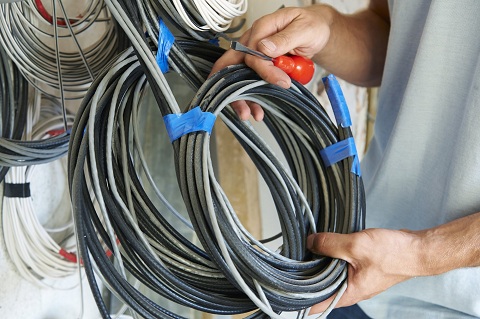Are you a hobbyist, an electronic manufacturing enthusiast, or a professional looking to save money without compromising quality? Welcome to the intriguing world of surplus electronic parts!
In this guide, we’ll share four essential tips to help you navigate this unique market. Continue reading to learn how to find the best deals, understand the quality of what you’re buying, and ensure your projects shine with reliability and innovation.
1. Understand the Nature of Surplus Electronic Parts
Comprehending what surplus electronic parts entail is crucial. These components often arise as excess stock from electronic manufacturing processes, occasionally resulting from discontinued projects or overestimations in production.
The spectrum of these parts is broad, extending from basic items like resistors and capacitors to more sophisticated elements such as integrated circuits and microcontrollers.
Advantages of Surplus Parts
The primary allure of surplus parts lies in their cost-effectiveness. These parts are available at a lower price point than their brand-new, wholesale electronics parts counterparts.
This price difference makes them an attractive option for budget-conscious builders and companies in the electronics industry. However, the reduced cost doesn’t always mean compromised quality. Many surplus parts are in excellent condition, having been overproduced or unused in their intended projects.
Identifying Project Requirements
Understanding your project’s requirements is critical in leveraging surplus parts. Whether you’re engaged in a DIY electronics build, a prototype for a new product, or a large-scale production for the electronics industry, having a detailed list of necessary components is imperative.
This list guides your search and prevents unnecessary purchases of incompatible or redundant parts.
2. Source From Reputable Suppliers
The surplus electronics market is extensive and varied. Who you choose as your supplier is a key decision.
Not every supplier offers the same level of quality or reliability. It’s vital to source your parts from reputable and established suppliers.
Look for vendors that have the following:
- Positive customer feedback
- Solid track record in the industry
- Transparency regarding the origins and conditions of their parts
Assessing Supplier Credibility
When evaluating suppliers, consider their industry presence and customer testimonials. Suppliers with a long-standing presence in the market are often more reliable. They have established quality control processes and better understand the electronics parts they handle.
Also, suppliers who are open about where their surplus stock comes from and how it has been stored can give you more confidence in your purchases.
Asking the Right Questions
Interacting with suppliers requires a proactive approach. Don’t shy away from asking specific questions about the electronic parts you’re interested in.
Queries about the age of the components, their storage conditions (such as humidity and temperature control), and any previous applications or usage can provide valuable insights. This information is essential in evaluating the potential longevity and performance of the parts in your projects.
Understanding these factors can influence the quality and reliability of the electronic components you integrate into your work.
3. Verify Part Specifications and Quality
Ensuring that surplus parts align with your project’s specifications can be challenging but is crucial for the success of your project. It’s imperative to verify part numbers and scrutinize datasheets.
For example, if your project necessitates a specific resistor, info on 5 band resistor color code is essential to confirm its suitability. This verification process helps avoid mismatches and potential malfunctions in your electronics projects.
Importance of Accurate Specifications
Accurate specifications are the backbone of successful electronic projects. The right components not only ensure functionality but also impact the overall durability and efficiency of the device.
Precise specifications are essential for maintaining the integrity of the electronic system and ensuring compatibility with other components. They play a critical role in the scalability of a project. Accurate specs provide a clear roadmap for future upgrades and modifications.
Misjudging specifications can lead to suboptimal performance or even failure of the entire project.
Conducting a Thorough Inspection
Where feasible, physically inspecting the parts or requesting detailed photographs is highly recommended. Look for any indications of wear, corrosion, or damage.
Such imperfections can affect the performance and lifespan of the parts. A thorough inspection is essential for parts stored for extended periods, as they are more prone to degradation.
3. Understand the Risks and Rewards
Purchasing surplus electronic parts is a balancing act between potential risks and rewards. These risks include limited or no warranty, questionable longevity, and uncertain long-term availability.
However, the rewards can be substantial, notably in cost savings and the availability of rare or discontinued components.
Assessing the Trade-offs
Evaluate the potential risks against the benefits for your specific project. In scenarios where budget constraints are paramount, the cost savings from surplus parts may justify the associated risks.
Conversely, opting for new components may be more prudent in projects where reliability and warranty are crucial. This assessment is critical to making informed decisions that align with your project goals and risk tolerance.
4. Plan For Future Needs
The rapid evolution of technology and standards in the electronics industry necessitates forward-thinking when purchasing surplus parts. Consider not only the current needs but also the future compatibility and availability of these components.
Stocking Up on Hard-to-Find Parts
Encountering hard-to-find components critical for your projects can allow you to plan for the future. In such cases, buying these components in bulk can be a strategic move.
This approach ensures that you have a consistent supply of these vital parts for upcoming projects. It mitigates the risk of scarcity or obsolescence, ensuring the sustainability and longevity of your electronic designs.
Make Smart Choices With Surplus Electronic Parts
Navigating the world of surplus electronic parts can be both exciting and challenging. By understanding what you’re looking for, sourcing from reputable suppliers, verifying part specifications, assessing risks and rewards, and planning for the future, you can make smart, cost-effective decisions for your electronics projects.
Thank you for reading our guide on “5 Tips For Buying Surplus Electronic Parts.” We hope these tips will empower you to make informed decisions and excel in your electronic endeavors.
Don’t forget to explore our other articles for more insights into the electronics world!










